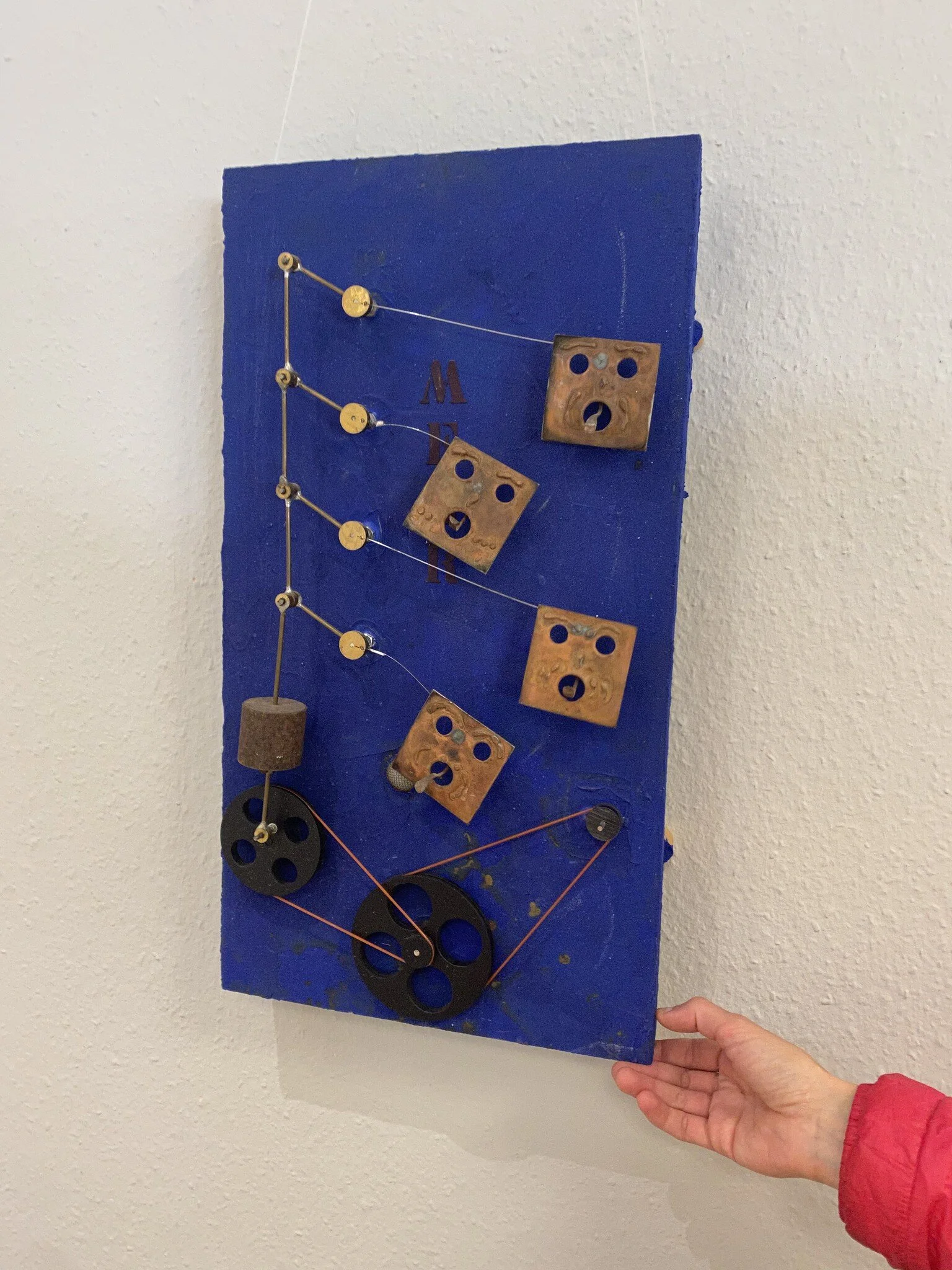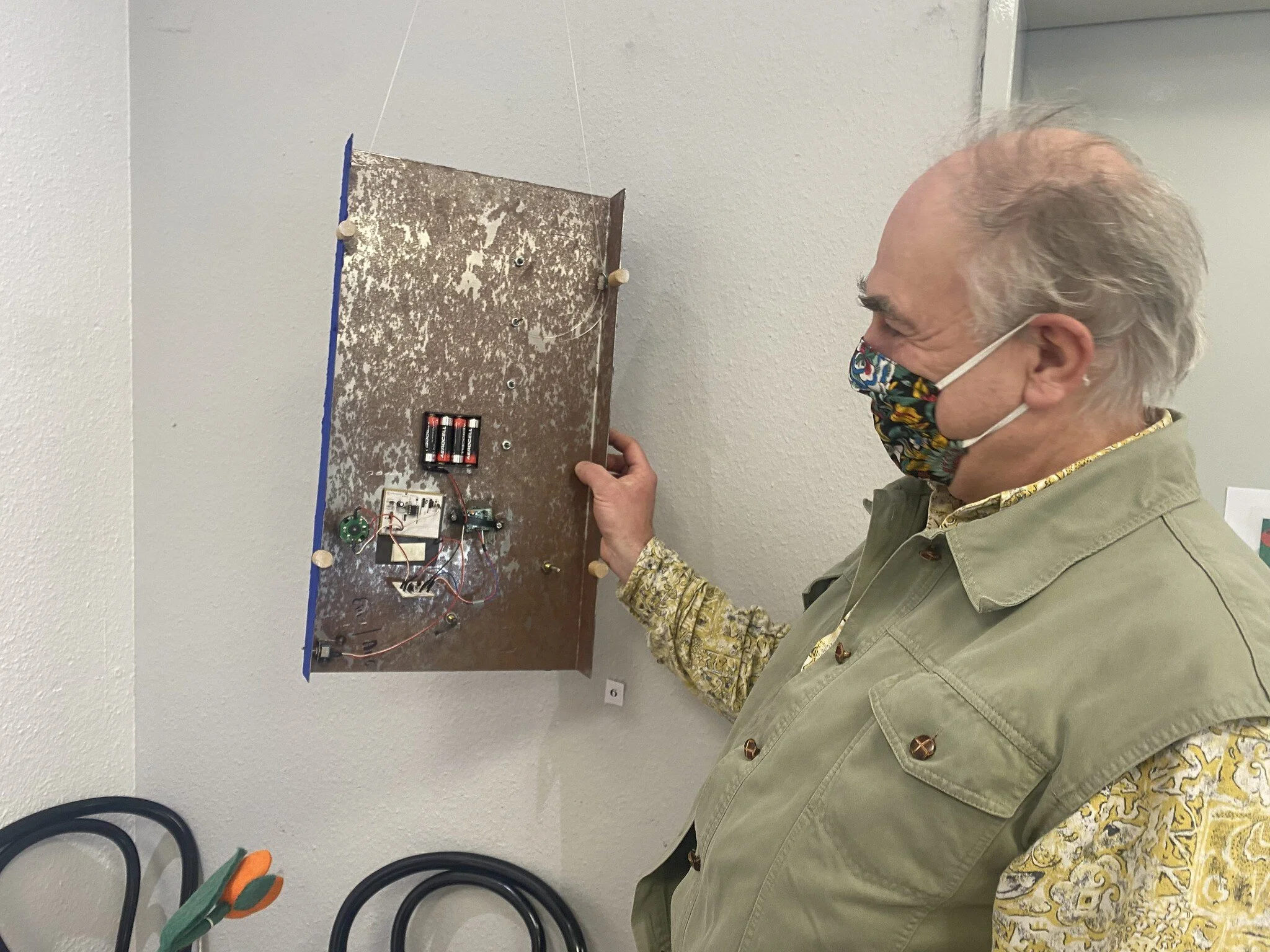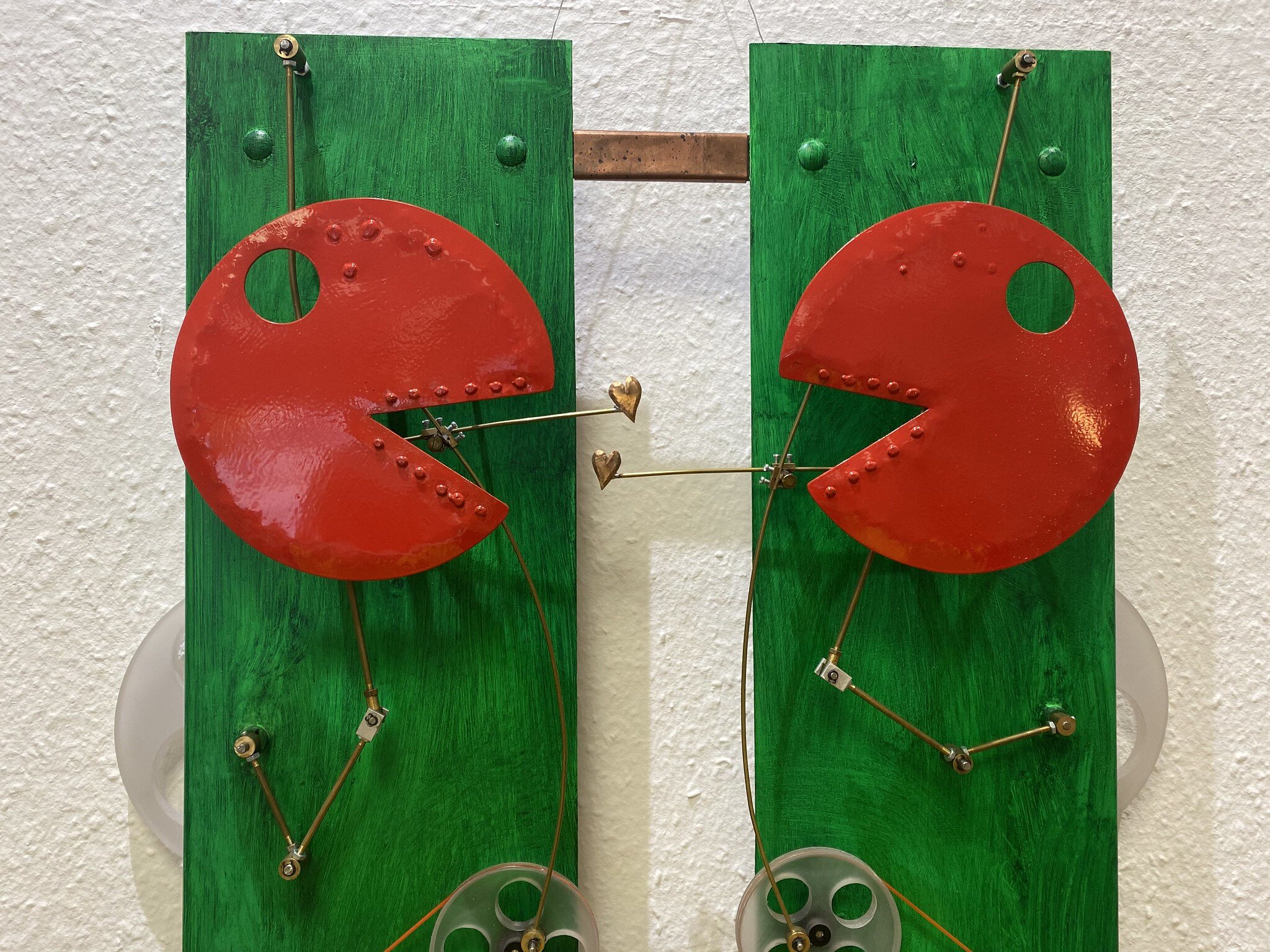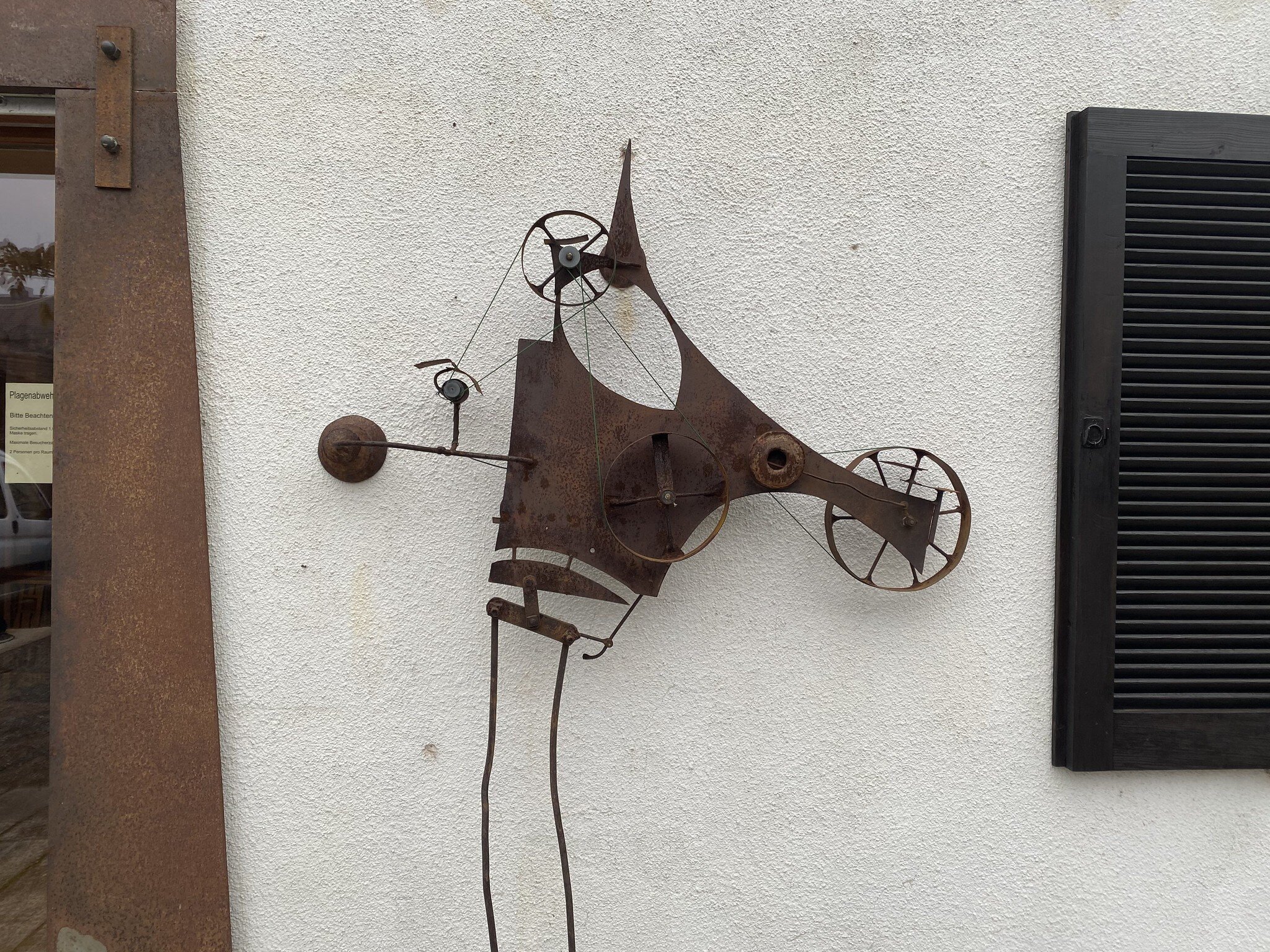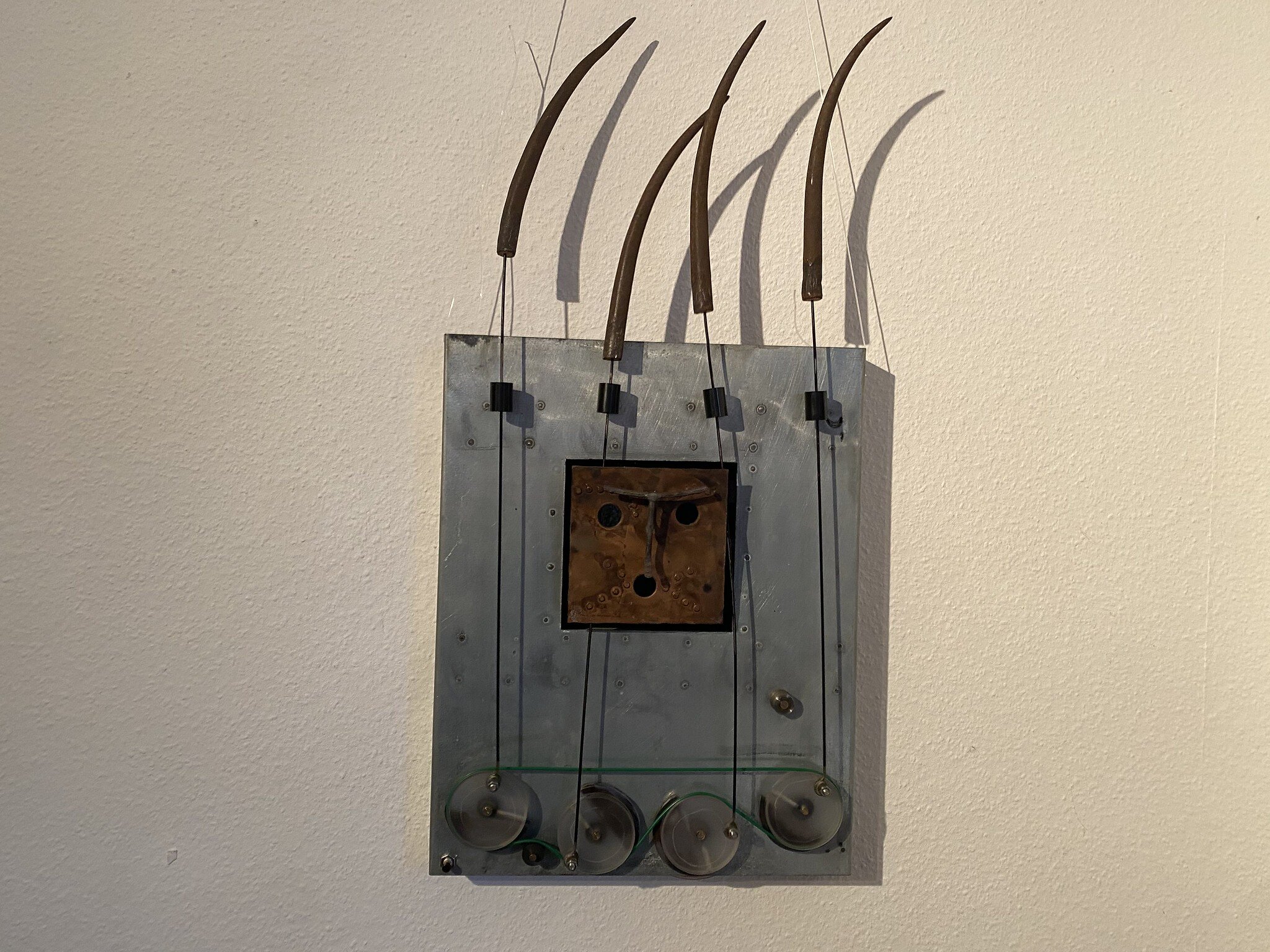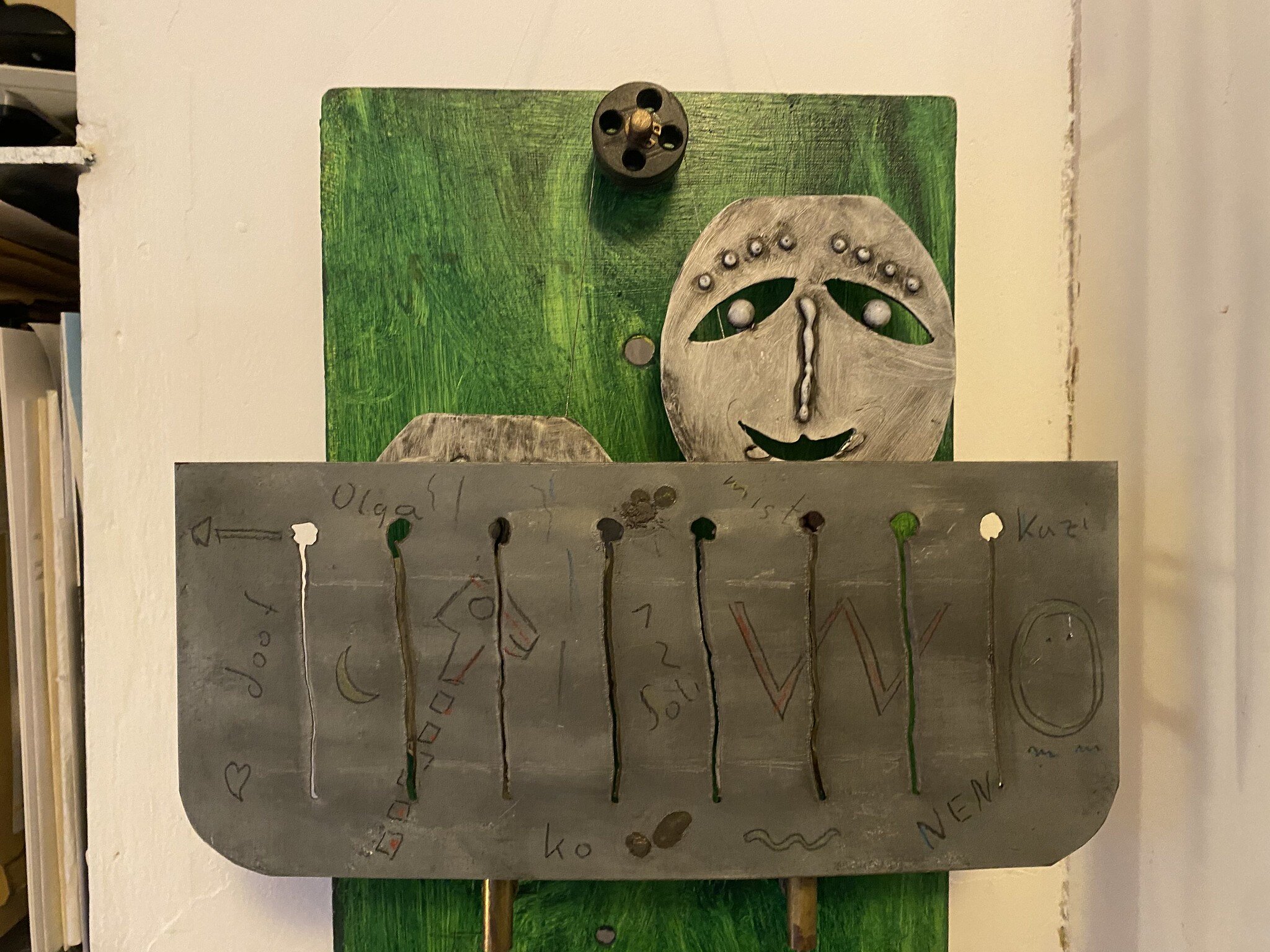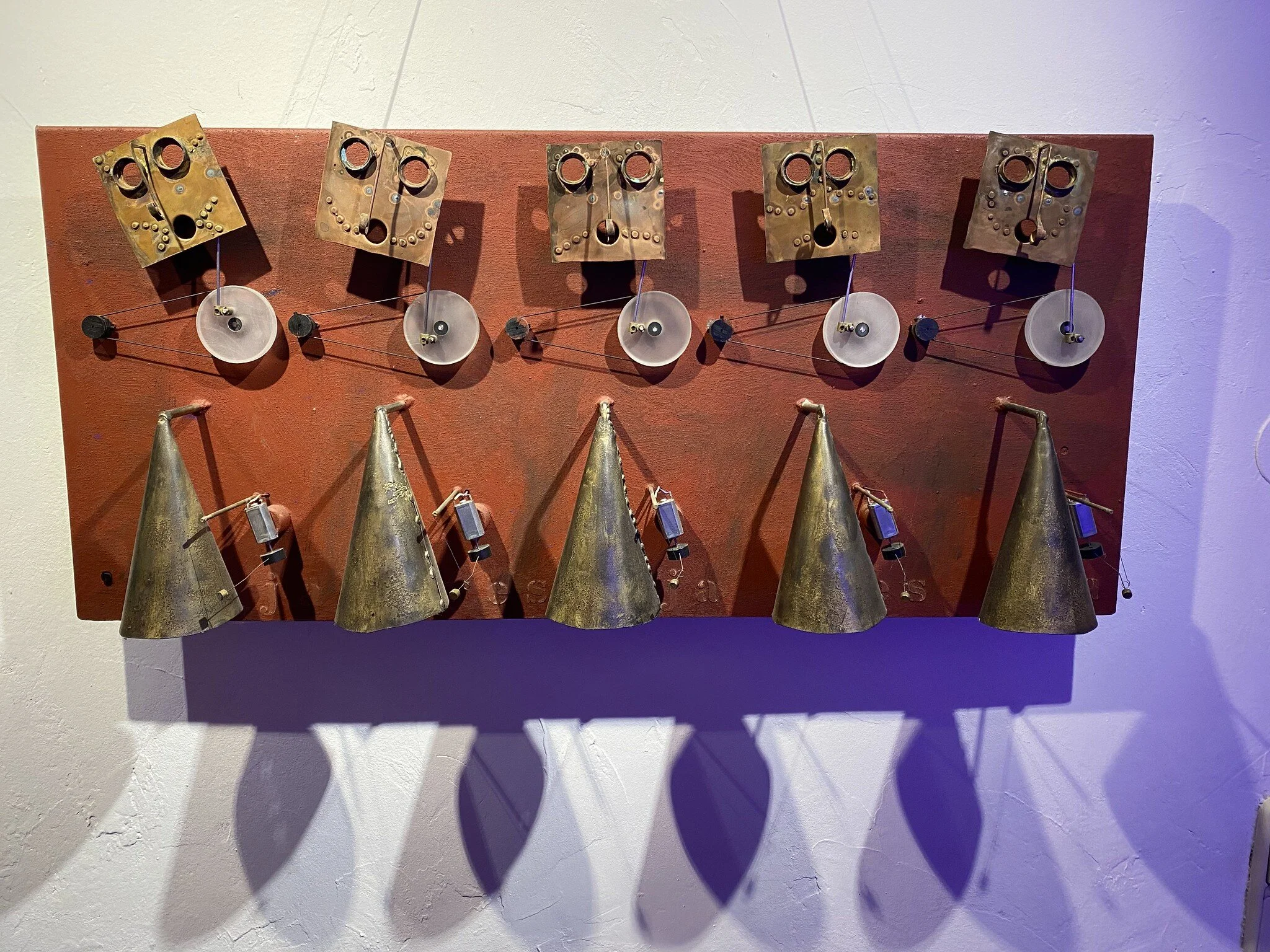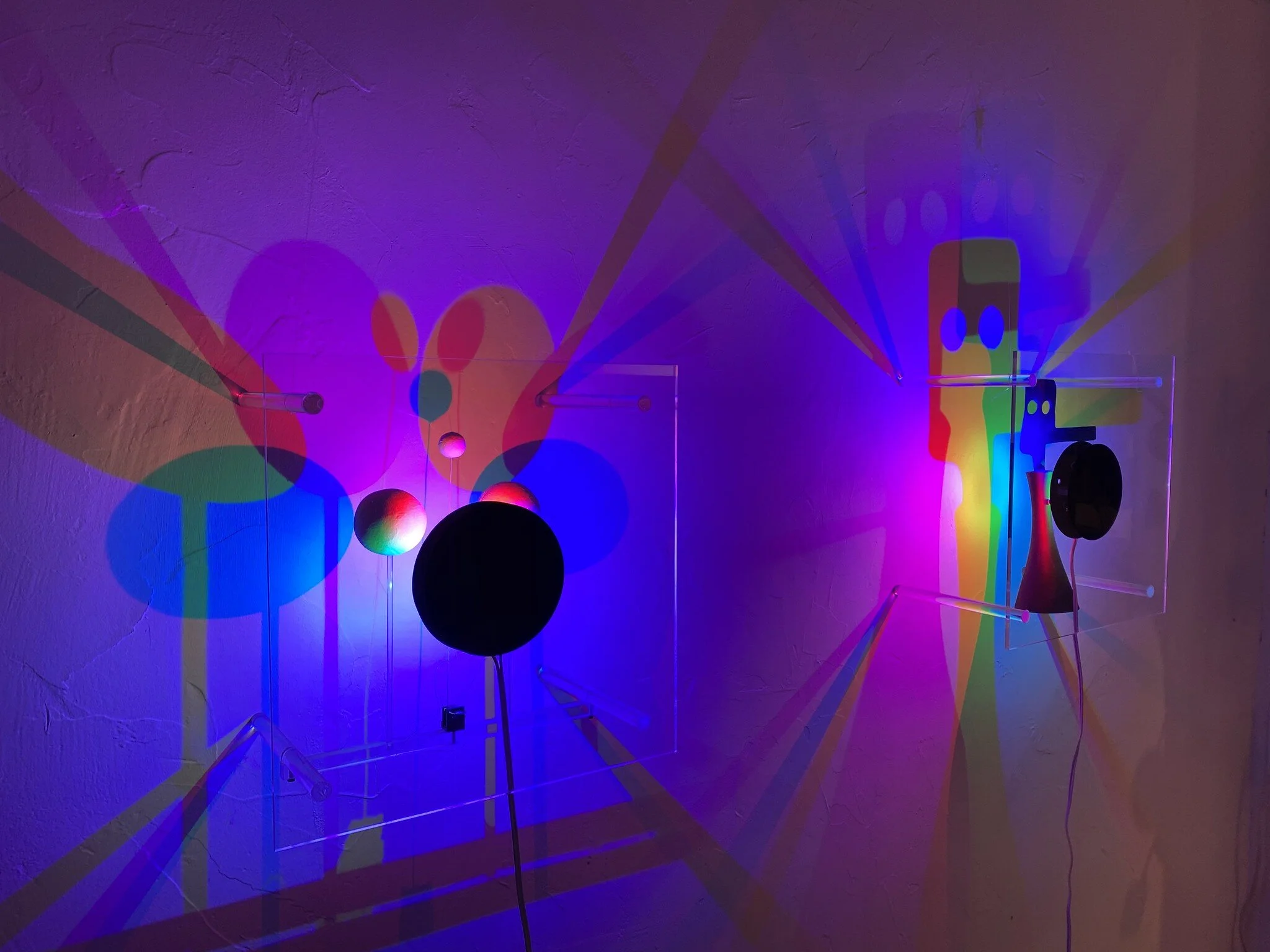Automata Inspirations in Freiburg
In the fall I moved to the city of Freiburg im Breisgau, Germany. I knew about the close access to spectacular nature in the Schwarzwald, the focus on sustainability especially in areas like Vauban and that it was supposed to be the sunniest corner of the country.
In the first couple of weeks there, I happened to run across the work of local kinetic artist Claus Schneidereit at a local gallery. I was really interested in the work and the connections to tinkering projects, especially the automata online course that we’ve been leading with Cabaret Mechanical Theatre.
We found out that he would be there for a artist open-house session on a Saturday and returned to meet him in person. In a mix of slightly confused German and English we communicated about our individual projects and interests. At the end of our encounter, he invited me and my wife over to see his workshop and collection of creations in his home atelier.
At his gallery, Claus showed us a lot of his really amazing sculptures and art pieces that can inspire new ideas for workshops related to automata. Over the past month, I’ve been thinking about his projects and how to connect them to low threshold experiments with beginners.
The first theme that I found quite interesting is a series of solar powered kinetic sculptures. Claus arranged little homemade circuits with transistors and capacitors to discharge enough energy to power large sculptures. I also was fascinated by the way that he broke solar panels and strung them together with delicate wire. I’m already starting to experiment with some smaller scale prototypes inspired by these designs.
Another really cool set of automata that he demoed centered around explorations of sound and music. Many of the art pieces were created with old scraps of metal that produce interesting noises when tapped or struck with moving elements. And other pieces included speakers and electronic sounds makers. We experimented a little bit last summer with greeting card electronics and recordable circuits and I think Claus’s sculptures can show more possibilities for working with these devices.
And one more really cool series of automata like sculptures included RGB LEDs to make moving light and shadow displays. In the Tinkering Studio we often had separate workshops for ‘light play’ and ‘cardboard automata’ but these art pieces made me reconsider the possibilities for combining the two ideas.
And as always, I’m really interested in the workshops of artists so Claus took us inside the spaces where he creates his work. There was a collection of woodworking tools, lots and lots of interesting scrap and an ingenious foot pedal powered spot-welder.
I’m convinced that everywhere in the world there are tinkerers around (even if they don’t use that term to describe themselves). I think with a little bit of digging you can find artists, builders, hackers and crafters who can inspire educators to create new ways to engage students science technology and art. I’m really happy to have found a kindred spirit in Claus and hope that we can find ways to collaborate more as the lockdown eases. As well I’ll keep my eyes open for other tinkerers in the local environs and share what I find here on this blog.

